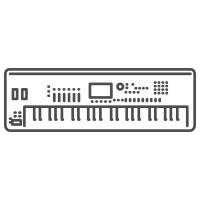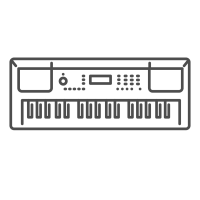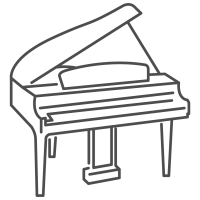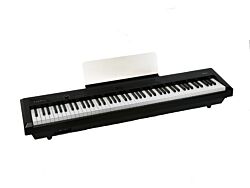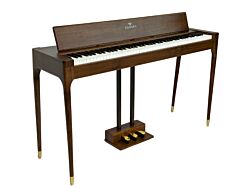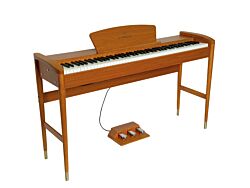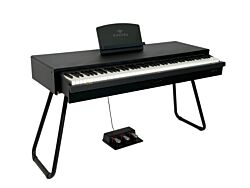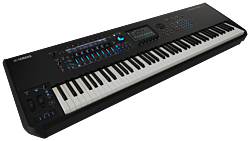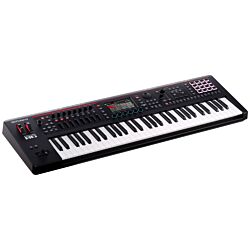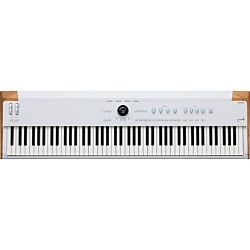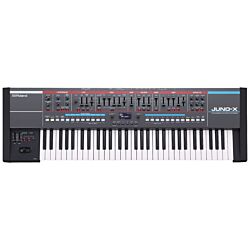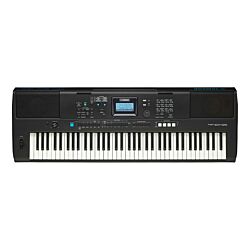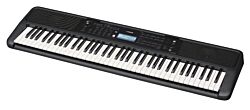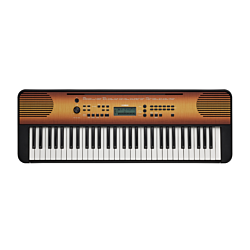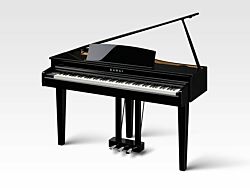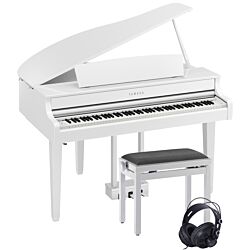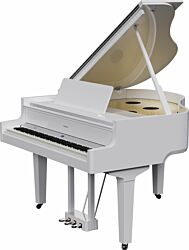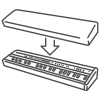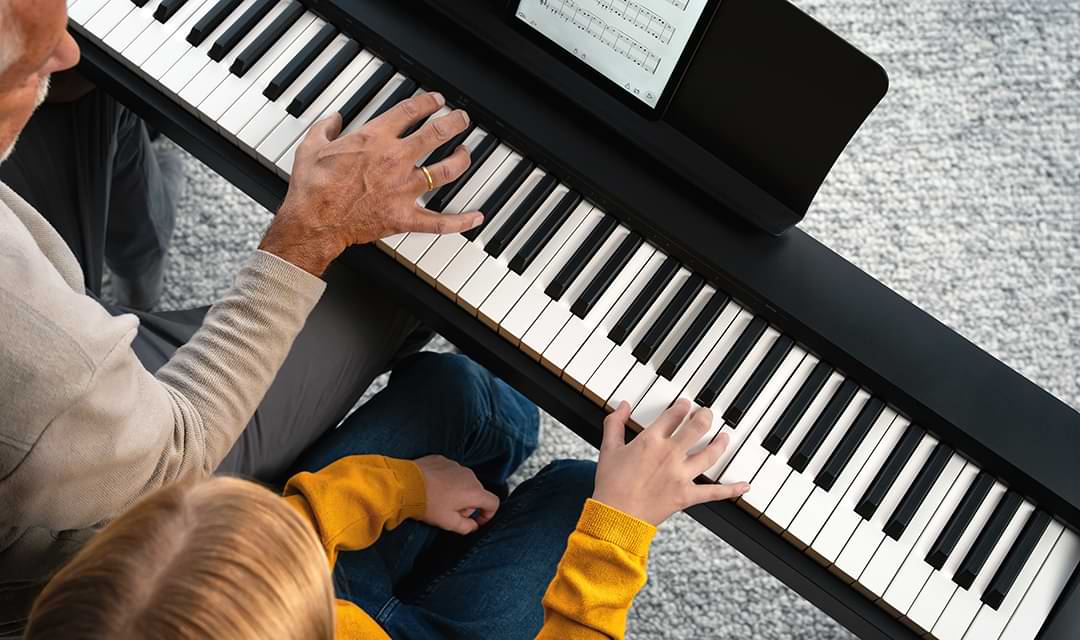Yamaha P-145BT, Hafnia HEP-10 & Kawai ES-60: A Detailed Comparison Between Three Digital Pianos
In this article, we take a closer look at three popular entry-level digital pianos: the Kawai ES-60, Hafnia HEP-10, and Yamaha P-145BT. The Yamaha P-145BT was released in early 2025 and has already gained attention, while the Kawai ES-60, launched in late 2024, brings a range of exciting new features. Since its release in early 2025, the Hafnia HEP-10 has also attracted significant interest thanks to its impressive features and price. Let’s dive into the specifications, sound, and functionality of these digital pianos to make your decision easier.
Design:
At first glance, the different models share a minimalist design with a matte finish across the entire cabinet. All three digital pianos have their control buttons placed above the keyboard on the left side, making it easy to navigate between functions. They each weigh around 11 kg, which makes them easy to transport, and their dimensions are almost identical, allowing them to fit seamlessly into most spaces.
The Design of Kawai ES-60
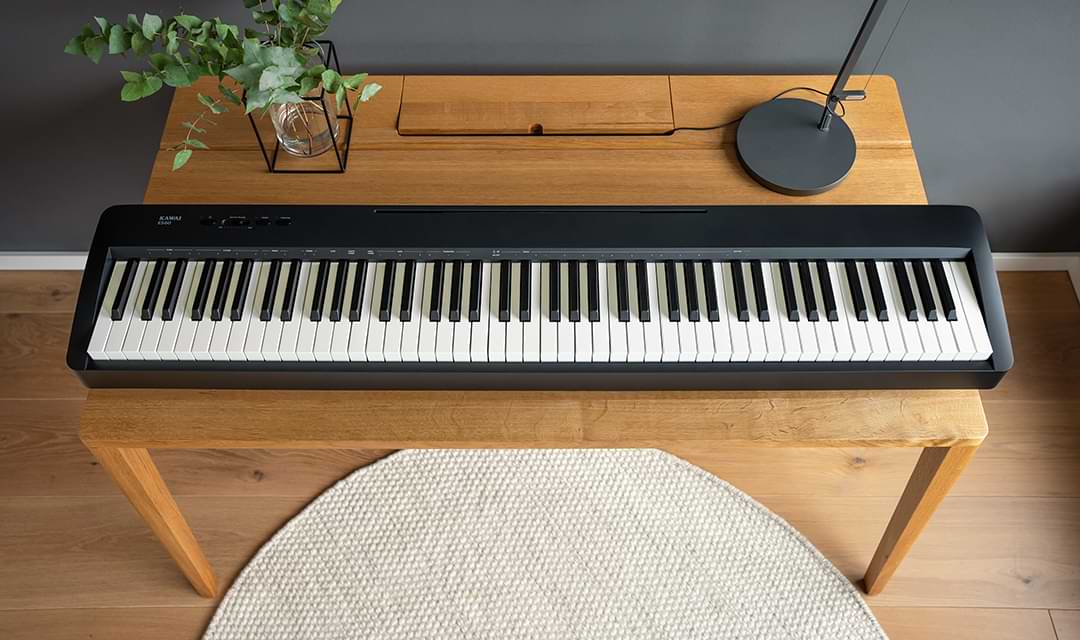
The Design of Yamaha P-145BT
The Design of Hafnia HEP-10
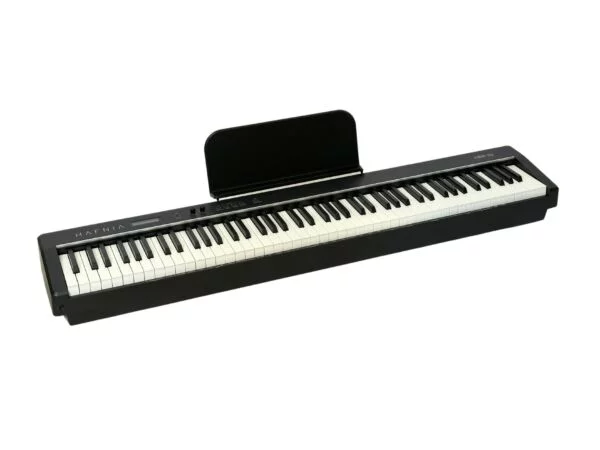
Key-feel:
One of the Key distinctions between these three digital pianos is their key action:
Yamaha P-145BT: This model uses Yamaha’s “Graded Hammer Compact Action.” The white keys have a high-gloss surface that prevents your fingers from slipping, while the black keys have a matte finish. This ensures a secure grip on the keys and provides better responsiveness while playing.

Hafnia HEP-10: This model uses Hafnia’s “Progressive Hammer Action” which provides a realistic and responsive playing experience similar to an acoustic piano. The keys have a matte finish, allowing the fingers to glide more easily across the keyboard. This results in a noticeably different playing feel compared to the Yamaha P-145BT, which some players may prefer. If you prefer a high-gloss key surface, this can be found on the larger HEP-20 model.
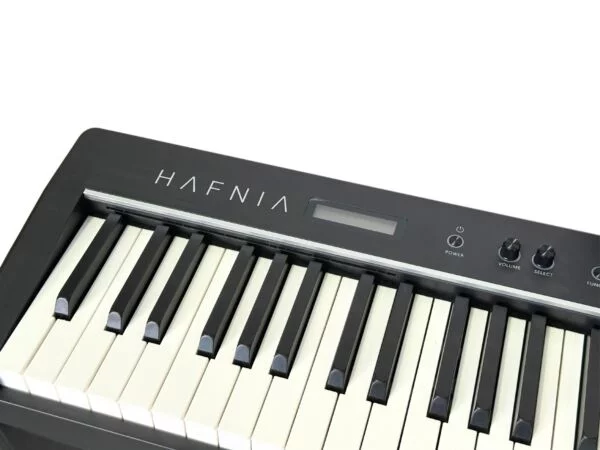
Kawai ES-60: This model uses Kawai’s “Responsive Hammer Light Action.” This new system from Kawai features a matte surface on all keys—both black and white. The texture is slightly smoother, allowing the fingers to glide more easily across the keys, which some players may prefer. The touch sensitivity offers a different playing experience compared to the Yamaha P-145BT, so it’s worth trying both to see which one best suits your playing style.
Sound Quality:
When it comes to sound quality alle the pianos have excelent sound and voie selection.
Yamaha P-145BT: The P-145BT features Yamaha’s CFIII-S concert grand piano sound, delivering a rich and clear tone with an impressive dynamic range. The model includes 10 built-in voices, featuring a selection of electric pianos, organs, and many others.
Hafnia HEP-10: The HEP-10 uses the well-regarded French Dream sound chip, which gives the piano a clear and realistic tone. Where this model truly stands out is in the sheer number of sounds it offers — it comes with a total of 128 built-in voices. These include various electric pianos, organs, harpsichords, accordions, synths, and a wide range of string instruments. This abundance of sounds ensures that you can find the right tone for any application.
Kawai ES-60: The ES-60 features Kawai’s SKEX Concert Piano Sound, known for its dynamic range. The ES-60 offers 17 different voices, including acoustic pianos, electric pianos, and many others, giving it a broader selection of sounds.
All of the digital pianos come with built-in speakers. The Kawai ES-60 is equipped with two 10-watt speakers, providing a rich and full sound—especially impressive for this price range. The Yamaha P-145BT also delivers a strong audio output with two 7-watt speakers, producing a clear and realistic sound, even though it doesn’t match the ES-60’s higher output. The Hafnia HEP-10 has two 6-watt speakers, which, despite the lower output, still produce a very fine and realistic sound.
Polyphony:
A significant difference between the three pianos is their polyphony:
Yamaha P-145BT: The P-145BT offers 64-note polyphony, which is standard for beginner digital pianos. While it provides a good playing experience for most beginners, more complex pieces with many notes may cause some notes to drop out.
Hafnia HEP-10: The HEP-10 delivers 128-note polyphony, a significant upgrade from the P-145BT. 128-note polyphony is more than enough for most piano pieces, making this piano suitable even for players with more advanced techniques.
Kawai ES-60: The ES-60 produces an impressive 192-note polyphony—the highest of all the pianos in this comparison. This ensures that no notes are lost, even in the most complex compositions or passages with many simultaneous notes. It allows for a more dynamic playing style and is especially advantageous for pianists with advanced techniques.
Connectivity
All three digital pianos offer many ways to connect to other devices:
Yamaha P-145BT:
The P-145BT includes a USB port, allowing you to connect it to a computer or other devices so you can record audio into music apps. It also has a headphone output on the back.
Hafnia HEP-10:
The HEP-10 offers a wide range of connectivity options, including MIDI IN/OUT, USB to Host, Audio IN/OUT, Bluetooth (MIDI & Audio), and a headphone output. These connection ports are ideal for people who need to practice or record, but also for those who perform live.
Kawai ES-60:
The ES-60 also features a USB output and a headphone output. Additionally, it has two line outputs on the back, making it possible to connect it to an external sound system. This makes the ES-60 a good choice for performers and recording musicians as well.
Which piano should i Choose?
Both the Kawai ES-60, Hafnia HEP-10, and Yamaha P-145 are excellent choices when it comes to beginners or anyone looking for a portable digital piano in a lower price range. However, they do meet somewhat different needs:
pick the Hafnia HEP-10, if you want:
o 128 key polyphony, which enables you to play complicated classical pieces
o An ocean of sounds to choose from, 128 in total.
o The best bang for your buck, This is the cheapest digital piano of the bunch, but it still holds its own when compared.
o Lots of different outputs, which makes it ideal for live performances or studio sessions
· Choose the Kawai ES-60, if you are looking for :
o The best Polyphony of the three, with 192 notes, this enables it to play even the most complicated classical pieces
o Many sounds to choose from, with a total of 17 sounds. Including their beautiful shigeru sample sound
o A plethora ofoutputs including Line-outputs, which makes it an amazing option for live performances and studio sessions.
o An authentic feel with textured tangents and their Responsive hammer light technology
· Vælg Yamaha P-145BT, hvis du vil have:
o A solid and reliable beginner piano with 64 note polyphony
o The wellknown Yamaha CFIII-s piano sound, This gives the piano an authentiv sound.
o A simple compact design at a reasonable price
o Simplicity with fewer funktions and great sound and feel
Final remarks
Both the Hafnia HEP-10, Kawai ES-60, and Yamaha P-145BT offer high-quality features for beginners and players looking for a portable digital piano. While the ES-60 stands out with higher polyphony, a better speaker system, and more connectivity options, the Hafnia HEP-10 delivers exceptional value for money, offering solid polyphony and a wide variety of sounds. The P-145BT, however, remains an excellent choice for those who want a straightforward and reliable piano with Yamaha’s fantastic sound quality.
In the end, your decision depends on your budget, your preferences for key action, and specific features such as polyphony and connectivity options. Be sure to try all the pianos if possible to find the one that best suits your playing style. Happy playing!
visit our showroom
Are you ready to experience the Hafnia HEP-10, Kawai ES-60, and Yamaha P-145BT in person? We invite you to visit our showrooms in Aarhus or Copenhagen to try out these fantastic digital pianos for yourself. Whether you're a beginner or a professional looking for a high-quality instrument, our experts are here to guide you and help you find the perfect piano for your musical journey. Don’t miss the opportunity to discover the instruments’ impressive features and outstanding sound. We look forward to welcoming you to our showrooms!



